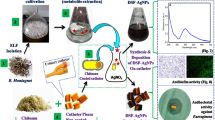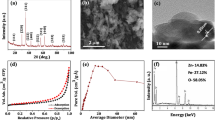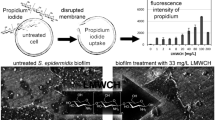Abstract
Antimicrobial delivery systems are useful tools to control biofilm growth on abiotic surfaces such as urinary catheter. The present study examined whether nanostructured lipid carriers coated with chitosan (NLC-chitosan) affected the growth of uropathogenic biofilms of Escherichia coli. NLC-chitosan was prepared using the emulsion and sonication method, and further characterized with respect to particle size, polydispersity index, and zeta potential. After determining the minimum inhibitory and bactericidal concentrations, E. coli biofilms were grown on catheter specimens (following a preliminary study in which E. coli was found to adhere better to the catheter surface than glass slide and plate). At the 48, 72, 96, and 120 h of growth, they were exposed to 0.9% NaCl solution (negative control), 0.12% chlorhexidine solution (positive control), or NLC-chitosan (final chitosan concentration of 0.28%). After 24 h of treatment, the biofilms were collected to analyze their bacterial viability. NLC-chitosan preparation had bimodal particle size distribution with mean size of 292.9 ± 2.5 nm and polydispersity index of 0.24 ± 0.03 and positive zeta potential (+19.1 ± 0.2) indicating the nanoparticle coating by chitosan. Compared with the control groups, NLC-chitosan affected bacterial viability of biofilms at all ages studied (p<0.05). NLC-chitosan can effectively control the growth of young and mature biofilms of uropathogenic E. coli.




Similar content being viewed by others
References
Donlan, R. M. (2001). Biofilms and device-associated infections. Emerging Infectious Diseases, 7, 277–281. https://doi.org/10.3201/eid0702.010226.
Percival, S. L., Suleman, L., Vuotto, C., & Donelli, G. (2015). Healthcare-associated infections, medical devices and biofilms: risk, tolerance and control. Journal of Medical Microbiology, 64, 323–334. https://doi.org/10.1099/jmm.0.000032.
Wi, Y. M., & Patel, R. (2018). Understanding biofilms and novel approaches to the diagnosis, prevention, and treatment of medical device-associated infections. Infectious Disease Clinics of North America, 32, 915–929. https://doi.org/10.1016/j.idc.2018.06.009.
Kumar, A., Alam, A., Rani, M., Ehtesham, N. Z., & Hasnain, S. E. (2017). Biofilms: survival and defense strategy for pathogens. International Journal of Medical Microbiology, 307, 481–489. https://doi.org/10.1016/j.ijmm.2017.09.016.
Lebeaux, D., Chauhan, A., Rendueles, O., & Beloin, C. (2013). From in vitro to in vivo models of bacterial biofilm-related infections. Pathogens, 2, 288–356. https://doi.org/10.3390/pathogens2020288.
Beloqui, A., Solinís, M. Á., Rodríguez-Gascón, A., Almeida, A. J., & Préat, V. (2016). Nanostructured lipid carriers: promising drug delivery systems for future clinics. Nanomedicine, 12, 143–161. https://doi.org/10.1016/j.nano.2015.09.004.
Bugnicourt, L., & Ladavière, C. (2017). A close collaboration of chitosan with lipid colloidal carriers for drug delivery applications. Journal of Controlled Release, 256, 121–140. https://doi.org/10.1016/j.jconrel.2017.04.018.
Muxika, A., Etxabide, A., Uranga, J., Guerrero, P., & de la Caba, K. (2017). Chitosan as a bioactive polymer: processing, properties and applications. International Journal of Biological Macromolecules, 105, 1358–1368. https://doi.org/10.1016/j.ijbiomac.2017.07.087.
Ali, A., & Ahmed, S. (2018). A review on chitosan and its nanocomposites in drug delivery. International Journal of Biological Macromolecules, 109, 273–286. https://doi.org/10.1016/j.ijbiomac.2017.12.078.
Casadidio, C., Peregrina, D. V., Gigliobianco, M. R., Deng, S., Censi, R., & Martino, P. D. (2019). Chitin and chitosans: characteristics, eco-friendly processes, and applications in cosmetic science. Marine Drugs, 17, 369. https://doi.org/10.3390/md17060369.
Anghel, I., & Grumezescu, A. M. (2013). Hybrid nanostructured coating for increased resistance of prosthetic devices to staphylococcal colonization. Nanoscale Research Letters, 8, 6. https://doi.org/10.1186/1556-276X-8-6.
Aires, C. P., Del Bel Cury, A. A., Tenuta, L. M. A., Klein, M. I., Koo, H., Duarte, S., & Cury, J. A. (2008). Effect of starch and sucrose on dental biofilm formation and on root dentine demineralization. Caries Research, 42, 380–386. https://doi.org/10.1159/000154783.
Herigstad, B., Hamilton, M., & Heersink, J. (2001). How to optimize the drop plate method for enumerating bacteria. Journal of Microbiological Methods, 44, 121–129. https://doi.org/10.1016/S0167-7012(00)00241-4.
Bradford, M. M. (1976). A rapid and sensitive method for the quantitation of microgram quantities of protein utilizing the principle of protein-dye binding. Analytical Biochemistry, 72, 248–254. https://doi.org/10.1016/0003-2697(76)90527-3.
DuBois, M., Gilles, K. A., Hamilton, J. K., Rebers, P. A., & Smith, F. (1956). Colorimetric method for determination of sugars and related substances. Analytical Chemistry, 28, 350–356. https://doi.org/10.1021/ac60111a017.
Pivetta, T. P., Simões, S., Araújo, M. M., Carvalho, T., Arruda, C., & Marcato, P. D. (2018). Development of nanoparticles from natural lipids for topical delivery of thymol: investigation of its anti-inflammatory properties. Colloids and Surfaces. B, Biointerfaces, 164, 281–290. https://doi.org/10.1016/j.colsurfb.2018.01.053.
Pivetta, T. P., Silva, L. B., Kawakami, C. M., Araújo, M. M., Del Lama, M. P. F. M., Naal, R. M. Z. G., Maria-Engler, S. S., Gaspar, L. R., & Marcato, P. D. (2019). Topical formulation of quercetin encapsulated in natural lipid nanocarriers: evaluation of biological properties and phototoxic effect. Journal of Drug Delivery Science and Technology, 53, 101148. https://doi.org/10.1016/j.jddst.2019.101148.
Clinical and Laboratory Standards Institute. (2012). Methods for dilution antimicrobial susceptibility tests for bacteria that grow aerobically. CLSI, [approved standard - ninth edition. Document M07-A9, vol. 32, n. 2].
Galván, E. M., Mateyca, C., & Ielpi, L. (2016). Role of interspecies interactions in dual-species biofilms developed in vitro by uropathogens isolated from polymicrobial urinary catheter-associated bacteriuria. Biofouling, 32, 1067–1077. https://doi.org/10.1080/08927014.2016.1231300.
Doyle, R. J. (2000). Contribution of the hydrophobic effect to microbial infection. Microbes and Infection, 2, 391–400. https://doi.org/10.1016/s1286-4579(00)00328-2.
Gomes, L. C., Silva, L. N., Simões, M., Melo, L. F., & Mergulhão, F. J. (2015). Escherichia coli adhesion, biofilm development and antibiotic susceptibility on biomedical materials. Journal of Biomedical Materials Research. Part A, 103, 1414–1423. https://doi.org/10.1002/jbm.a.35277.
Flemming, H.-C., & Wingender, J. (2010). The biofilm matrix. Nature Reviews. Microbiology, 8, 623–633. https://doi.org/10.1038/nrmicro2415.
Flemming, H.-C., Wingender, J., Szewzyk, U., Steinberg, P., Rice, S. A., & Kjelleberg, S. (2016). Biofilms: an emergent form of bacterial life. Nature Reviews. Microbiology, 14, 563–575. https://doi.org/10.1038/nrmicro.2016.94.
Stewart, P. S., & Costerton, J. W. (2001). Antibiotic resistance of bacteria in biofilms. Lancet, 358, 135–138. https://doi.org/10.1016/s0140-6736(01)05321-1.
Paula, A. J., & Koo, H. (2017). Nanosized building blocks for customizing novel antibiofilm approaches. Journal of Dental Research, 96, 128–136. https://doi.org/10.1177/0022034516679397.
Rampino, A., Borgogna, M., Blasi, P., Bellich, B., & Cesàro, A. (2013). Chitosan nanoparticles: preparation, size evolution and stability. International Journal of Pharmaceutics, 455, 219–228. https://doi.org/10.1016/j.ijpharm.2013.07.034.
Sreekumar, S., Goycoolea, F. M., Moerschbacher, B. M., & Rivera-Rodriguez, G. R. (2018). Parameters influencing the size of chitosan-TPP nano- and microparticles. Scientific Reports, 8, 4695.
Zaki, S. S. O., Ibrahim, M. N., & Katas, H. (2015). Particle size affects concentration-dependent cytotoxicity of chitosan nanoparticles towards mouse hematopoietic stem cells. Journal of Nanotechnology, 2015, 919658. https://doi.org/10.1155/2015/919658.
Müller, R. H., Jacobs, C., & Kayser, O. (2001). Nanosuspensions as particulate drug formulations in therapy rationale for development and what we can expect for the future. Advanced Drug Delivery Reviews, 47, 3–19. https://doi.org/10.1016/S0169-409X(00)00118-6.
Moore, T. L., Rodriguez-Lorenzo, L., Hirsch, V., Balog, S., Urban, D., Jud, C., Rothen-Rutishauser, B., Lattuada, M., & Petri-Fink, A. (2015). Nanoparticle colloidal stability in cell culture media and impact on cellular interactions. Chemical Society Reviews, 44, 6287–6305. https://doi.org/10.1039/c4cs00487f.
Kampf, G. (2019). Adaptive bacterial response to low level chlorhexidine exposure and its implications for hand hygiene. Microbial Cell, 6, 307–320. https://doi.org/10.15698/mic2019.07.683.
Schmudde, Y., Olson-Sitki, K., Bond, J., & Chamberlain, J. (2019). Navel to knees with chlorhexidine gluconate: preventing catheter-associated urinary tract infections. Dimensions of Critical Care Nursing, 38, 236–240. https://doi.org/10.1097/DCC.0000000000000371.
Kampf, G. (2016). Acquired resistance to chlorhexidine - is it time to establish an 'antiseptic stewardship' initiative? The Journal of Hospital Infection, 94, 213–227. https://doi.org/10.1016/j.jhin.2016.08.018.
Aires, C. P., Batista, M. J. A., & Pitondo-Silva, A. (2017). Decrease of ceftriaxone susceptibility in Klebsiella pneumoniae according to biofilm maturation. Journal of Global Antimicrobial Resistance, 9, 126–127. https://doi.org/10.1016/j.jgar.2017.05.001.
Acknowledgements
We thank Dr Marcelo C. Alves for helping us to perform the statistical analysis, Dr Luciana Kabeya for the English corrections, and Mr. Alcides Silva Pereira for his technical assistance.
Funding
This study was supported by the Brazilian funding agencies São Paulo Research Foundation (FAPESP; grant no. 2015/17712-9) and Coordination for the Improvement of Higher Education Personnel (CAPES; Finance Code 001).
Author information
Authors and Affiliations
Corresponding author
Ethics declarations
Conflict of Interest
None.
Research Involving Human and/or Animals
None.
Informed Consent
None.
Additional information
Publisher’s Note
Springer Nature remains neutral with regard to jurisdictional claims in published maps and institutional affiliations.
Rights and permissions
About this article
Cite this article
Osungunna, M.O., Pitondo-Silva, A., Silva, L.B. et al. Effect of Chitosan-Coated Nanostructured Lipid Carrier on Escherichia coli Biofilms. BioNanoSci. 11, 762–769 (2021). https://doi.org/10.1007/s12668-021-00872-z
Accepted:
Published:
Issue Date:
DOI: https://doi.org/10.1007/s12668-021-00872-z




